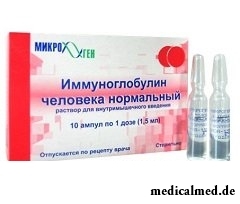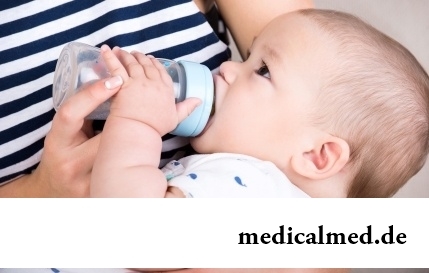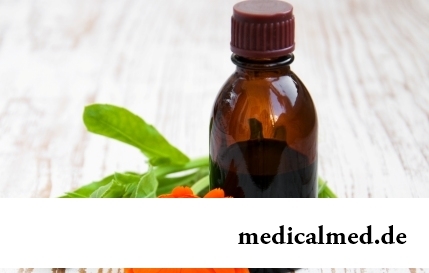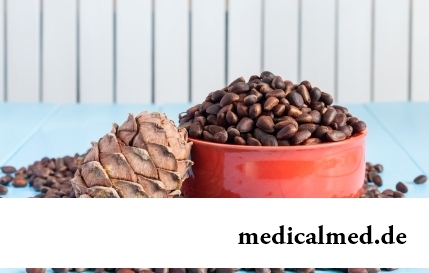





Immunoglobulin of the person normal
Application instruction:
 Immunoglobulin of the person normal – immunological means.
Immunoglobulin of the person normal – immunological means.
Form of release and structure
Dosage forms:
- Solution for intramuscular introduction (in oil) (in ampoules: on 1 ml / 1 a dose, in a cardboard pack of 10 pieces; on 1,5 ml / 1 a dose, in a cardboard pack of 10 pieces or in planimetric plastic packaging on 5 or 10 ampoules, in a cardboard pack 1 or 2 packagings; on 3 ml / 2 doses, in a cardboard pack of 10 pieces; on 3 ml / 1 a dose, in a cardboard pack of 10 pieces);
- Solution for intravenous (in/in) introductions (on 25 or 50 ml in bottles, in a cardboard pack 1 bottle);
- Solution for infusions (on 25, 50 or 100 ml in bottles, in a cardboard pack 1 bottle).
Active agent – immunoglobulin of the person normal:
- Solution for introduction in oil: in 1 ml – 100 mg;
- Solution for in/in introductions: in 1 ml – 50 mg;
- Solution for infusions: in 1 ml – 50 mg.
Indications to use
Use of drug is shown:
- Solution for introduction in oil: at therapy agamma-and gipoglobulinemiya; for prevention: whooping cough, measles, hepatitis A, meningococcal infection, flu, poliomyelitis; for increase in body resistance at infectious diseases in the period of reconvalescence;
- Solution for in/in introductions: therapy of severe forms of viral and bacterial infections; at postoperative complications at the adults and children connected with a septicaemia;
- Solution for infusions: an idiopathic Werlhof's disease (especially at acute forms at children), treatment and prevention of infectious diseases, immunodeficient inborn states (a partial, full or variation immunodeficiency, severe forms of combined immunodeficience, Viskotta-Aldrich's syndrome), and also the immunodeficiency acquired as a result of transplantation of marrow and other types of transplantations at chronic lymphocytic leukemia, at AIDS at children, a syndrome of Kawasaki (as the acetylsalicylic acid accompanying therapy).
Contraindications
Contraindications to use of Immunoglobulin of the person normal in the form of solutions for in oil and in/in introductions:
- Heavy allergic reactions in the anamnesis to introduction of blood preparations;
- Allergic diseases, including bronchial asthma, atopic dermatitis, a recurrent small tortoiseshell, and also tendency to allergic reactions in the anamnesis (the patient of this category administration of drug is possible at simultaneous use of antihistamines which continue to enter within 3 days at in oil and 8 – at in administration of immunoglobulin);
- System immune diseases, including nephrite, diseases of blood, connecting fabric (in need of immunoglobulin use introduction should be made only after consultation with the corresponding specialist and against the background of purpose of the accompanying therapy).
It is impossible to apply solution to introduction in oil at babies along with calcium a gluconate.
Use of solution for infusions is contraindicated to patients with the selection deficit of immunoglobulin A (IgA) against the background of existence of antibodies against IgA and at hypersensitivity to drug.
With care it is necessary to appoint solution for infusions during pregnancy and breastfeeding.
Route of administration and dosage
Solution for injections in oil is entered into the outside surface of a hip or an upper outside quadrant of a gluteus (in/in administration of drug – it is forbidden!) It is impossible to store drug in the opened ampoule, to use ampoules with the broken marking or tightness, in case of discoloration of solution, its opacification or existence of not breaking flakes, at disturbance of storage conditions and the expired period of validity. Within 2 hours before introduction it is necessary to sustain ampoules with drug at the room temperature. The procedure is carried out in the conditions of observance of rules of antiseptics and an asepsis. Solution is gathered in the syringe a needle with a wide gleam not to allow foaming. The dose and frequency rate of administration of immunoglobulin are appointed by the doctor on the basis of clinical indications.
The recommended dosing for prevention:
- Hepatitis A: once, to children from 1 to 6 years in a dose of 0,75 ml, up to 10 years – 1,5 ml, to patients are more senior than 10 years – 3 ml (in case of need repeated introduction is possible only in 2 months);
- Prevention of measles: once, the dose for children depends on time which passed from the moment of contact with the patient and a condition of the child, and can make 1,5 or 3 ml, in case of contact with multi-infections – 3 ml, adult – 3 ml (it is shown to the patients from age of 3 months who did not have measles and are not imparted against it no later than 6 days from the moment of contact with the patient);
- Prevention of whooping cough: to the children who were not ill and not vaccinated or not completely vaccinated against whooping cough – on 3 ml two times with a break at 24 o'clock during the mildest time, but not later than 3 days from the moment of contact with the patient;
- Prevention of a meningococcal infection: once, to children from 6 months to 3 years in a dose of 1,5 ml, from 3 to 7 years – 3 ml, within the first 7 days after contact with the patient with a generalized meningococcal infection;
- Prevention of poliomyelitis: once in doses of 3-6 ml, not completely or to the children who are not imparted by a poliomyelitic vaccine, in earlier terms after contact with sick poliomyelitis;
- For treatment and prevention of flu solution is entered once: to children up to 2 years in a dose of 1,5 ml, from 2 to 7 years – 3 ml, to patients are more senior than 7 years – 4,5-6 ml, at a severe form of a disease introduction of a dose of drug is shown repeated (in 24-48 hours);
- At therapy agamma-and gipoglobulinemiya appointment produce in a dose 1 ml on 1 kg of weight of the patient (it can be entered into 2-3 inclusion with a break in 24 h). Carrying out the subsequent purposes of drug according to indications is possible only 1 month later;
- For increase in body resistance at chronic pneumonia and in the period of reconvalescence at the long course of acute infectious diseases introduction of a single dose of 0,15-0,2 ml on 1 kg of weight of the patient is shown. Frequency rate of introduction is appointed by the doctor, but no more than 4 injections with an interval of 2-3 days.
Solution for in/in introductions part just before use 0,9% solution of sodium of chloride of isotonic or 5% glucose solution in a proportion 1:4. Ready solution of immunoglobulin is entered in/in kapelno with a speed of 8-10 thaws a minute, daily within 3-5 days. Without additional cultivation immunoglobulin can be entered in/in kapelno with a speed of 30-40 thaws a minute, a course of treatment – 3-10 transfusions which are carried out with an interval of 24-72 hours. This method of introduction can cause a kollaptoidny condition of the patient. Transfusion treatment can be carried out in combination with other medicines. A single dose for children – 3-4 ml on 1 kg of weight (but no more than 25 ml), for adults – 25-50 ml. Use of drug should be carried out only in stationary conditions with observance of rules of an asepsis. Before introduction it is necessary to sustain bottles with drug within 2 hours at the room temperature. The solutions containing a deposit or muddy are not subject to use.
Solution for infusions is entered in/in kapelno, before use drug is recommended to be warmed to body temperature or room temperature. It is possible to enter only transparent solution. Initial speed of infusion – 30 drops a minute, in 10 minutes bring speed to 40 drops a minute. Apply:
- Replacement therapy at congenital and secondary immunodeficience, including children about AIDS: on 2-8 ml on 1 kg of weight of the patient once a month before increase in level of immunoglobulin (in the absence of sufficient dynamics of growth of level or its very bystry decrease it is necessary to reduce intervals between introduction or to increase a dose to 16 ml by 1 kg of weight);
- At allogenic transplantation of marrow to the patient appoint on 10 ml to 1 kg of weight within 7 days;
- At a syndrome of Kawasaki – 32-40 ml on 1 kg of weight within 2-5 days, or 40 ml on 1 kg – once;
- At an idiopathic Werlhof's disease – 16-20 ml on 1 kg of weight, once (in case of need it is possible to repeat in 2-3 days), or on 8 ml on 1 kg of weight of the patient within 2-5 days (if necessary repetition of a course is possible);
- At heavy viral and bacterial infections, including sepsis – 8-10 ml on 1 kg of weight, daily within from 1 to 4 days;
- To premature children (with a low weight at the birth) for prevention of infections administration of drug is appointed with a break in 1-2 weeks on 10-20 ml to 1 kg of weight of the baby;
- At a chronic inflammatory demyelinating neuropathy, a syndrome to Giyena-Barra: on 8 ml on 1 kg of weight within 5 days (repetition of a course with a break in 4 weeks is allowed);
- To patients with cerebral ischemia and coronary heart disease: on 8 ml on 1 kg, daily.
Side effects
Reactions on in oil and in/in administration of immunoglobulin, usually, are absent.
Development of allergic reactions of various type up to an acute anaphylaxis is in some cases possible. Therefore patients after administration of drug have to be within 30 minutes under observation of medical staff; the room where administer the drug, has to be provided with means of antishock therapy.
In rare instances at introduction in oil local reactions in the form of a hyperemia and temperature increase within the first days to 37,5 °C can develop.
At infusional introduction development of side effects in the form of a fever, a headache, nausea, fervescence, vomiting, a dorsodynia, an ache in joints, allergic reactions is possible. Seldom – a lowering of arterial pressure, in isolated cases – symptoms of aseptic meningitis (nausea, a severe headache, vomiting, a stiff neck, fervescence, a photosensitivity and disturbance of consciousness), an acute anaphylaxis, aggravation of the available renal failures.
Special instructions
Immunoglobulin of the person normal should be applied only on doctor's orders.
Each procedure is registered in the established registration forms with the indication of date of issue, number of a series, manufacturer, a period of validity, Date of Introduction and a dose, the nature of reaction of the patient to administration of drug.
After administration of immunoglobulin of an inoculation against epidemic parotitis and measles it is necessary to carry out not earlier than in 3 months. After vaccination against these diseases it is possible to enter immunoglobulin not earlier than in 2 weeks. In case of need uses of immunoglobulin of earlier specified term vaccination should be repeated. Carrying out all other inoculations is authorized in any terms, irrespective of time of administration of drug.
Administration of drug can become the reason of false positive results of serological tests.
It is impossible to exceed the recommended infusion speed, it can cause development of heavy side effects. The entire period of infusion and 20 minutes of the patient after it has to be under control of the doctor.
Medicinal interaction
Clinically significant medicinal interaction of solution for in oil or in/in introductions it is not established.
Solution for infusions lowers activity of the weakened live vaccines against a rubella, measles, chicken pox, epidemic parotitis. In case of need administrations of immunoglobulin during the first 2 weeks after a parotitis, measles or rubella inoculation, vaccination against these diseases it is necessary to repeat in 3 months. Solution for infusions can be mixed only from 0,9% chloride sodium solution.
Terms and storage conditions
To store at a temperature of 2 up to 8 °C, not to freeze. To protect from children.
Period of validity: solution for introduction in oil – 2 years, solution for in/in introductions – 1 year.
According to opinion of many scientists, vitamin complexes are almost useless for the person.

All the known slogan "Protect Men!" arose not from scratch. In a sense, the nature created representatives of strong...
Section: Articles about health
Feeding by a breast - the integral part of ideal motherhood allowing to come into contact with the kid and to create to it healthy immunity since early years. Nevertheless, this important process in life of mother and child can be saddened laktostazy − by a delay of milts...
Section: Articles about health
Impossibility to conceive the child – a trouble of many Russian families. During quite long time was considered that main "culprits" of troubles such are women. Modern physicians claim that the situation is different: about a half of failures in attempts of reproduction are connected with male infertility....
Section: Articles about health
The state of health of the person depends on many factors. One of the most important is the constant but which is not exhausting, motive...
Section: Articles about health
Bathing in broths of medical flowers and plants (phytobathtub) was eurysynusic since Cleopatra who is a good judge in all that concerns beauty and health. And today phytobathtubs is the simple and available means allowing not only to remove nervous N...
Section: Articles about health
The depression not without reason is considered one their main troubles of our century: for scientific and technical progress, acceleration of rate of life and a surplus of information of people it is forced to pay with stresses, negative emotions and weakening of protective forces of an organism. As a result widely the states which are characterized by the increased uneasiness, falling of interest in life, spiritual and physical discomfort extend....
Section: Articles about health
Producers of milk mixes for children assure: mixes are ideally balanced and adapted for needs of babies. In a sluch...
Section: Articles about health
For many women the word "fat" sounds as a sentence. In aspiration to an ideal figure they try to exclude, first of all, from the menu all dishes containing fats without having at the same time a clear idea of a role of these substances in exchange processes, and about an afterbirth...
Section: Articles about health
The cosmetics intended for improvement of a condition of skin, nails and hair are used by each woman. Expenses on regular acquisition of the fashionable widely advertized products of well-known companies for many become very notable and significantly burden the family budget. Meanwhile, there is a number of inexpensive pharmaceutical drugs which can quite be applied in the cosmetic purposes. At the same time the effect of their use is often more noticeable, than result of use of the most expensive...
Section: Articles about health
Tuberculosis – a serious infectious disease which development is caused by mycobacteria (Koch's bacilli). The illness is known from a deep d...
Section: Articles about health
Coffee - the tonic loved by many for the invigorating aroma and deep taste. Having the stimulating effect, coffee increases working capacity, promotes concentration of attention, fights against drowsiness and improves mood. Statistically, about 30% of inhabitants...
Section: Articles about health
The majority of gynecologic diseases prove three main signs, each of which speaks about need of a visit to the gynecologist. Certainly, it is possible to establish the exact diagnosis only after inspection, but on the basis of some signs it is possible to assume existence of this or that pathology. Let's consider symptoms of the female diseases which are found most often....
Section: Articles about health
Sugar - the digestible refined product which is not of special value for an organism of the modern person. Use...
Section: Articles about health
"Epilepsy" doctors made the diagnosis in antique times. Displays of an illness and pattern of its development are very well studied. However for nonspecialists this disease remains to not less mysterious, than in the ancient time. Many delusions are connected with epilepsy...
Section: Articles about health
The person, as well as all other beings living on our planet feels weather changing. It is the normal meteosensitivity which is not causing to healthy people of special troubles. Meteodependence, on the contrary, is the morbid condition which is characterized by an exacerbation of chronic illnesses at change of air temperature, differences of atmospheric pressure, wind strengthening, magnetic storms and other "surprises" on which the nature is so generous. The people suffering from meteodependence have to з...
Section: Articles about health
Nightmares belong to the most unpleasant frustration. Statistically, they happen at 4% of adults, and almost at 70% of children and...
Section: Articles about health
Statistically, at the address to doctors seven of each ten patients complain of a headache. Actually it is much more people who are periodically feeling unpleasant feelings such. Many people, apart from a headache the reason for serious fear...
Section: Articles about health
The hysteromyoma is diagnosed more than at a third of women 35 years are more senior. This high-quality new growth which at early stages successfully resolves by means of medicines. It is necessary to resort to an operative measure only when patients too late address specialists, or therapeutic methods do not give the expected effect because of specific features of an organism. Besides, there is a large number of quite effective national...
Section: Articles about health
Small appetite at the child – the complaint which pediatricians should hear practically from each mother. Most often it is carried to разр...
Section: Articles about health
What will only not be thought up by persons interested to have a beautiful figure. Here the last innovation – for weight loss needs to be eaten greasy food. Let's understand whether there is at a fatty diet common sense....
Section: Slideshow
Since the moment when the child becomes a school student, his sight begins to be exposed to the strengthened loadings which are supplemented with viewing of animated films and long computer games. During this period of life of the child development of not completely created organs of sight, it is very easy to break the excessive loading which is aggravated with lack of a work-rest schedule. As a rule, and occurs: according to WHO statistics, every fourth child of school age has these or those diseases of eyes, Wednesday...
Section: Articles about health
The state of health of the person in many respects depends on food. The organism will well function if during food it are...
Section: Articles about health
The healthy nutrition is the invariable principle of health and good health for long years of the woman. Nevertheless, in a diet at each stage of life there are the features allowing to support an organism by those substances which are most necessary...
Section: Articles about health
Cystitis, or inflammation of a mucous membrane of a bladder, this very widespread disease which, owing to some features of a structure of bodies of urinogenital system, women have approximately four times more often than men. Women aged from 20 up to 45 years enter into the main risk group. Cystitis is an illness of a bacterial origin. It can have an acute or chronic current. The second option is dangerous not only a frequent recurrence, серьезн...
Section: Articles about health
Is told about advantage of domestic animals for development of the child much. But many parents nevertheless do not hurry to bring pets as about...
Section: Articles about health
White teeth and the Hollywood smile – a dream of many people. Long time was considered that the plaque on teeth and change of their color – destiny of those who incorrectly eat smokes and badly brushes teeth. But the paradox is available: at everything the variety of toothpastes existing today...
Section: Articles about health
Weakness of an ankle joint – very widespread problem. Its existence is demonstrated by tendency to a podvorachivaniye of legs when walking on heels, frequent painful sprains, pain on average and anonymous toes even after small loadings. Usually people with such pathology take off unpleasant effects by means of the anesthetizing pulverizing and ointments, but it does not lead to radical elimination of a problem. Meanwhile, at the known persistence it is possible to strengthen an ankle to the house...
Section: Articles about health
